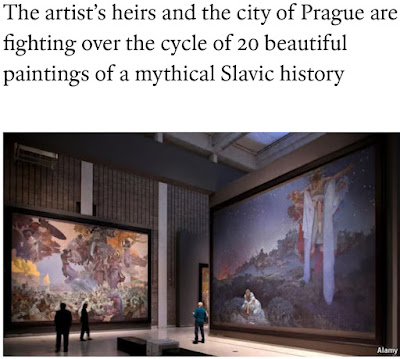In 1314, a poet imagined Hell like nobody before: a series of circles deep below ground, where things get worse the deeper you go.
Dante's Inferno (part of the Divine Comedy) takes him on a journey to the bottom with his guide, Virgil.Since 1997, BookFinder has made it easy to find any book at the best price. Whether you want the cheapest reading copy or a specific collectible edition, with BookFinder, you’ll find just the right book. BookFinder.com searches the inventories of over 100,000 booksellers worldwide, accessing millions of books in just one simple step.”
John Quincy Adams on Impostor Syndrome and the True Measure of Success
BY MARIA POPOVA
“You will never get any more out of life than you expect,” Bruce Lee wrote to himself. All expectation is a story of the possible. Every person lives inside a story of who they are, what they are worth, and what is possible for their life, and suffers in proportion to how conscious they are of the story, how much credence they give those inner voices over the raw input of reality. It is often when life blindsides us with a bright counternarrative to a limiting inner story that we suffer the most, because we are suddenly forced to revise our entire personal mythos, to relinquish our familiar ways of keeping ourselves small, to exceed our own expectations of the possible.
At fifty-three, while serving as Secretary of State as presiding over the commission for weights and measurements, fighting valiantly for the adoption of the meter after its hard-won invention, John Quincy Adams (July 11, 1767–February 23, 1848) received the unexpected news that he has been elected President of the American Academy of Arts and Sciences. None of his credentials, none of his merits so obvious to others, kept him from feeling unworthy of the post.
The Paradoxes and Possibilities of Transformation: Adam Phillips on Our Ambivalent Desire for Change
BY MARIA POPOVA

When answering the Orion questionnaire, a question stopped me up short by contracting an incomprehensible expanse of complexity into a binary:
Are you the same person you were as a child?
It is fundamentally a question about change — its possibility and its paradoxes, our yearning for it and our ambivalence toward it. Here I am, living on a different landmass from the one I was born on, in a body composed of cells not one of which existed in its present form at my birth, but my sources of joy and suffering feel largely unchanged since I was a child. What, then, is change — and who is it doing the changing?
“We create ourselves. The sequence is suffering, insight, will, action, change,” the psychoanalyst Allen Wheelis wrote in his 1973 field guide to how people change. But when we wish to recreate ourselves, to change for the better, how do we know what to want, what is truly and dependably better?
“The things we want are transformative, and we don’t know or only think we know what is on the other side of that transformation,” Rebecca Solnit wrote in her wonderful Field Guide to Getting Lost, shining a sidewise gleam on our staggering blind spot about transformation — we are simply incapable of imagining ourselves on the other side of a profound change, because the present self doing the imagining is the very self that needs to have died in order for the future self being imagined to emerge.
Polyvagal Theory and the Neurobiology of Connection: The Science of Rupture, Repair, and Reciprocity
BY MARIA POPOVA
“A purely disembodied human emotion is a nonentity,” William James wrote in his pioneering 1884 theory of how our bodies affect our feelings — the first great gauntlet thrown at the Cartesian dualism of body versus mind. In the century and a half since, we have come to see how the body and the mind converge in the healing of trauma; we have come to see consciousness itself as a full-body phenomenon.
Beyond the brain, no portion of the body shapes our mental and emotional landscape more profoundly than the tenth cranial nerve — the longest nerve of the autonomic nervous system that unconsciously governs the inner workings of the body.
Known as the vagus nerve — from the Latin for “wandering,” a root shared with vagabondand vague — it meanders from the brain to the gut, touching every organ along the way with its tendrils, controlling everything from our heart rate and digestion to our reflexes and moods.






